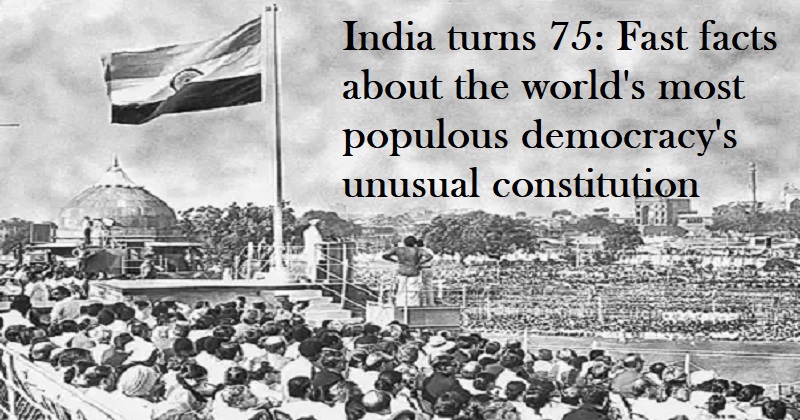
On August 15, 2022, India will be 75 years old. Partition, the division of India into Muslim-majority Pakistan and Hindu-majority India, was a complex process that led to its independence from British colonial rule. Partition displaced tens of millions of people and resulted in the loss of life and property that many will remember for the rest of their lives. For more than two years following Partition, India’s future remained unresolved. While the country gained independence on August 15, 1947, it was not until January 26, 1950 that it became a fully sovereign republic with its own head of state.
Between those dates, the 299 men and women of India’s Constituent Assembly worked to envision their new country and to inscribe their vision and fundamental legal principles in a national constitution. The result of their efforts is a remarkable document that continues to inspire and divide people today. The following are some facts about the Indian Constitution.
High word count
The Indian Constitution, adopted in 1949, is one of the world’s longest and most comprehensive constitutions, with more than 145,000 words. By comparison, the U.S. Constitution originally contained just seven articles and around 4,200 words. The world’s shortest constitution belongs to Monaco, which has just around 3,800 words.
Early exemplar
When the Indian Constitution was ratified, constitutions were not as common as they are today. India’s was just the world’s 23rd national constitution, while Pakistan didn’t ratify its constitution until 1956. In societies like India with many deep cultural, religious and socioeconomic divides, the process of drafting and ratifying a shared founding document can serve a valuable symbolic function.
Crowdsourced inspiration
In 1947, India’s Constituent Assembly’s Drafting Committee sought inspiration from across the world for its new constitution. B.R. Ambedkar drew on his education in the U.S., Canada, Ireland and the UK to help design the Indian constitution. The committee’s advisor B.N. Rau indicated which country had inspired each element of the draft constitution he prepared for the Assembly. For example, the 1947 constitution did not contain a ‘due process’ clause like its American counterpart: U.S. Supreme Court Justice Felix Frankfurter had warned due process would give Indian courts too much power to overrule legislation, while simultaneously imposing a heavy burden on the judiciary.
Simple modifications
The Indian Constitution is one of the most amended in the world, with the most recent amendment passed in August 2021. Only about 27 of the approximately 12,000 amendments proposed since 1787 have been adopted. Easy change is credited with contributing to the Indian Constitution’s longevity, which at 75 years old outlives the global average of 17 years. Only Taiwan and South Korea, both of which gained independence shortly after World War II, retain their original constitutions. Thailand, on the other hand, has had roughly 20 constitutions since 1932.
Striking features
The Indian Constitution has several striking features that are remarkable – for better and for worse. Some parts of the Indian Constitution, such as a provision on preventative detention, have prompted considerable criticism from scholars, activists and lawyers. The constitution has two provisions on religious freedom; Article 26 recognizes ‘religious denomination[s]’ as also having specific rights regarding property, institutional management and ‘matters of religion’.
What matters, when these two rights collide, in which limitations apply to Article 25 and which communities count as religious denominations for Article 26. In 1991, a high court decided that Sabarimala could ban women at all times, despite good reasons to believe women had historically been granted entry under some conditions. Then, in 2018, the Indian Supreme Court invalidated that decision, declaring that because some women had likely always visited Sabarimala, all women should be allowed to enter.
Future of Indian democracy
Despite its long and generally promising history, Indian constitutional democracy faces turbulent times. Recent scandals have compromised the Supreme Court’s reputation as a steward of the constitution. Developments such as a controversial 2019 law threaten India’s status as a non-theocratic state. The framers intended to create a charter that would serve all Indians, no matter their faith, caste or gender.

Post Your Comments